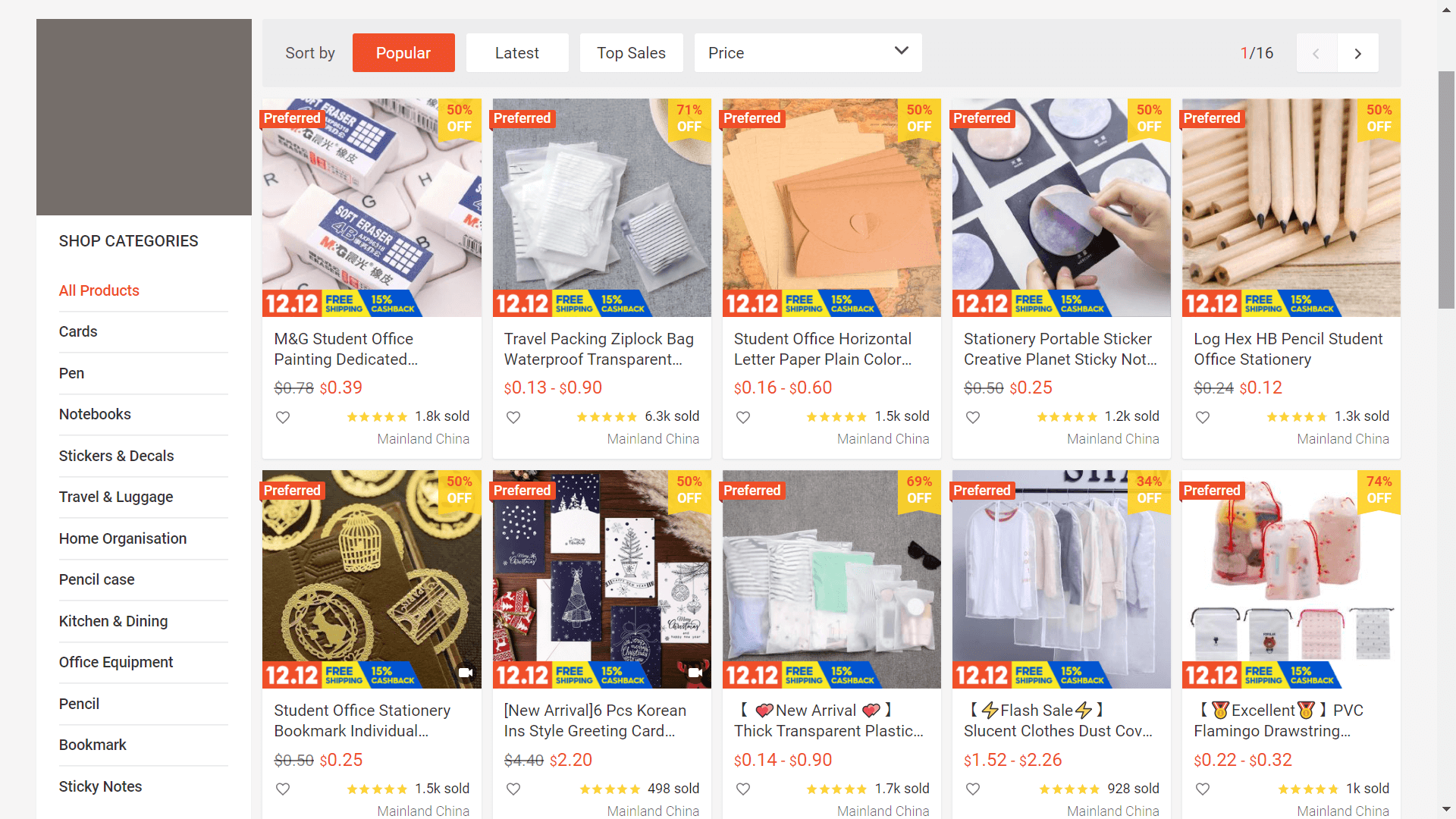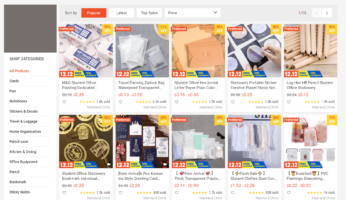
How To Start An Ecommerce Business In Singapore In 2021
Technology has changed the face of commerce. Success formulae of past years are unlikely to yield the same results today. While brick and mortar stores were the be-all and end-all of businesses in the past, the draw of online shopping has led to increasing vacancy rates in local malls. With COVID-19 accelerating the process of digitisation, stores without an online presence will lose out.
While there are a lot of online courses out there teaching you how to become an e-commerce seller, the reality is that starting your own e-commerce business is a highly complex and difficult endeavour.
With that in mind, we have condensed our guide into 3 main points – a concise but essential read for anyone looking to start their new e-commerce business. We have also compared the 3 main e-commerce retailers in Singapore for you to refer to in case you are thinking of becoming an e-commerce retailer.
#1 Choose A Platform
E-commerce can mean developing your own website or becoming an e-commerce seller on a platform, but whether you are selling home-baked cookies, dropshipping or offering B2B services, all businesses need a digital channel. Different channels have different niches and users, which is why it is important to think about where you want to launch your business.
Marketplace VS e-Store
Marketplaces are sites that aggregate sellers and products across categories. Think: Amazon, Taobao, or Shopee. The benefits of joining an established marketplace are numerous. Most marketplaces have comprehensive seller guides teaching you how to set up your store. Reputable marketplaces also increase the visibility of your products without you having to spend a dime on marketing.
However, as easy as it is for consumers to find your product, it is just as easy for them to find your competitor’s product. The aggregation of similar items on one page encourages price comparisons. As opposed to making more sales, businesses might find themselves engaged in price wars instead.
In a marketplace, your business is effectively a tenant to the site’s landlord. Businesses are subjected to the rules of marketplaces and their respective penalties. Notably, most marketplaces penalise late shipping which can be tricky if you have other commitments. Customisation beyond your digital storefront, and especially in terms of user experience, is also limited. As such, businesses might find it difficult to build branding.
The key benefit of having your own e-commerce website selling your products is ownership — you own your digital real estate — and nobody can take that away from you. That is why many small businesses are developing or have already developed e-commerce capabilities on their own websites — diversify your revenue streams and your risk.
Of course, coughing out the extra dough affords businesses the freedom to design their website. This is crucial to brand building and can help foster an identity that is otherwise obscured by the cookie-cutter templates of stores in marketplaces. More importantly, businesses are free to design the user experience, which is a key component in increasing customer engagement and improving sales.
3 Things To Consider When Choosing A Platform
#1 Platform Fees And Costs
The first thing you should consider is cost. Marketplaces like Lazada have lower upfront costs compared to website builders like Shopify. While some may require an application fee, most do not employ the subscription model. Advertising is also more or less taken care of and marketplaces tend to run their own sitewide promotions like Singles Day or Black Friday.
Of course, marketplaces almost always take a cut of your sales. Businesses might even need to pay extra for the site’s courier services or fork out money for late shipping penalties. While e-stores might also be charged a commission for payment services, there is more flexibility when it comes to fulfilling the order.
The disbursement of your profits also differ from platform to platform. While some platforms release the earnings each month on a fixed date, others allow business owners to withdraw money after a few sales. Businesses that prefer more flexibility in when they can withdraw their earnings should look for platforms that accommodate their needs.
#2 Audience Segmentation
The next thing you should consider is your audience. Different platforms have different niches. Selling electronic goods? Lazada has a decent track record in the category. Hawking fashion and beauty products? Qoo10 might be a better bet. Businesses should do their research on each platform and their niche before throwing in their lot with a platform.
On a more macro scale, different platforms have also expanded to different markets. South-East Asia is firmly in the grips of Lazada and Shopee. Qoo10 has managed to maintain a limited presence in the region while expanding to India, Hong Kong, and Taiwan. Businesses looking beyond the local market should bear in mind their target audience when choosing a platform. Future expansion plans will greatly influence the suitability of each marketplace.
In a similar vein, e-stores should also consider the availability of international domains. Certain website builders offer businesses multiple international domains at no additional costs. Its use can give you a leg up in Google search rankings, allowing your business to be more easily found.
#3 Business Goals And KPI
The last thing you should consider is your business goals. Some businesses are inherently more suited for e-stores than marketplaces. Are you selling a lifestyle, an experience, or building a brand? All these require advanced customisation that marketplaces cannot offer. Are you selling a service that requires scheduling? Marketplaces do not have calendars and are unable to block automatically block out time slots. Are you dropshipping? The same items are probably on offer for a lower price in marketplaces.
Ultimately, the best eCommerce platform is one that will help you reach your business goals. If you want to start selling in a marketplace but have yet to decide on one, here is a comparison table of Lazada, Shopee, and Qoo10.
#2 Test Your Product
Small businesses are inherently different from big ones. The same business strategies and management formula that led big businesses to success rarely apply to small businesses. Not only that, but small businesses also have less room for failure as there might not be enough funds to cushion losses.
This is where the lean startup method comes in. The lean startup method recognises that small business owners need to test a series of unverified hypotheses they have about their product or service to determine demand.
The Build-Measure-Learn loop is a core tenet in our software development methodology. First, you build a minimum viable product (MVP) – that is, a functional but bare-bones version of your product that you can test on potential consumers.
Next, you measure data by selling your MVP to consumers who provide feedback to your business. Then, you learn from the insights that are translated from the data and make appropriate adjustments. This might mean refining the existing product or service or pivoting altogether to target a new audience or create a new product. This cycle is repeated several times; hence, the term Build-Measure-Learn loop.
The benefit of this loop is two-fold. One, the iterative improvement based on customer feedback guarantees a product that is functional. Two, the product has already amassed a small but loyal customer base even prior to its official launch. There is no need for beta testing; yet, the product is ready to go. By employing the lean startup method, small businesses save time and resources that can be channelled into other aspects of the business.
#3 Design The Experience
User experience increases engagement and drives conversion. While the purpose of user experience design is the same across platforms and projects, the nature of e-commerce meant that there are certain aspects of the consumer journey businesses should focus their attention on.
Navigation menus are one of the first few things users will interact with within an e-commerce store. While consumers may enter your shop through a product page, most interested buyers will eventually find themselves on the store’s landing page. It is also one of the few things you can customise if your business is on a marketplace.
The last thing you want to do is to frustrate users with confusing navigation and bury your products under a series of links. Limiting the number of menu items and labelling them with appropriate, representative names can increase clarity and focus. Simple and intuitive navigation menus will allow users to browse your shop with ease and find items that they want quickly, improving the user experience.
Chat applications and chatbots are the primary way consumers interact with businesses. Chatbots on e-stores are fast becoming a norm and marketplaces are hot on their heels with the development of in-house chatbot applications.
As with navigation menus, the primary aim is to anticipate the needs of consumers to minimise frustration. As opposed to handling dozens of the same questions each day, coming up with friendly and informative canned responses can help you answer queries more efficiently. A quick turnaround contributes to a positive user experience and will also help to keep customers from bouncing off your store, leading to more sales.
Most businesses can agree on the merits of customer reviews but the practice of encouraging and incentivising consumers to leave a positive review on their product or service is rather uncommon. User experience is designed based on user journey. It is the rare consumer that does not seek out evidence of a product’s performance and functionality.
Social proof helps small businesses stand out in an arena with stiff competition. For e-stores, improving user experience can mean including testimonials or allowing customers to leave reviews of the product on your website. Marketplaces often have inbuilt review systems. All that is left for businesses to do is to provide a gentle nudge in the right direction.
Read Also: 3 Things You Can Do To Improve User Experience And Convert More Customers
The best user experience is seamless. Designing navigation menus, optimising chatbots, and encouraging customer reviews all serve to anticipate users’ needs. While these are largely part of the presale process, user experience extends beyond presale into conversion and even post-sale. If you would like to know how else you can improve user experience in your business, connect with us at sales@interx-labs.com.








